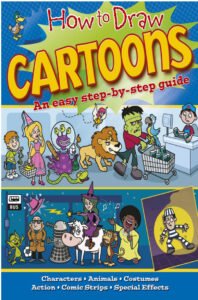Strategies Enhancement in Food Production – CBSE Notes for Class 12 Biology
Animal Husbandry:
1. Animal husbandry is the agricultural practice of breeding and raising livestock. It deals with the care and breeding of livestock like buffaloes, cows, pigs, horses, cattle, sheep, goat, etc. It also includes poultry farming and fisheries. More than 70% of the world’s livestock population is in India and China. Many new technologies have also been applied to achieve improvement in quality and productivity.
2. to improve quality and quantity in animal husbandry are:
I. Management of Farms and Farm Animals
(i) Dairy farm management is the management of animals for milk and its products for human consumption.
(a) It deals with processes and systems to improve quality and quantity of milk.
(b) Milk yield depends mainly on the quality of breeds in the farm.
(c) Dairy farm management processes include:
• Selection of good breeds having high yielding potential and resistance to the diseases.
• Cattle should be housed-well, should have sufficient water and should be kept in disease-free conditions.
They should be fed in a scientific manner, with good quality and quantity of fodder.
• Stringent cleanliness and hygiene ©f both the cattle and the handle are very important, during milking, storage and transport of milk and its products.
• Regular inspection and keeping proper records of ail the activities of’dairy is also mandatory.
• Regular visits of a veterinary doctor is necessary.
(ii) Poultry farm management includes the management of poultry which i& the class of domesticated fowl (birds) used for food or for their eggs. It includes chicken, ducks, Turkey and geese.
The poultry farm management includes following processes:
(a) Selection of disease-free and suitable poultry breeds
(b) Housing should be proper and safe.
(c) Proper food and water should be provided.
(d) Health care and hygiene of poultiy Mrds is mandettery
II. Bee-keeping or apiculture is the maintenance of hives of honeybees for the large
scale production of honey and beewax. The excessive demand of honey for its nutritive value and bees wax for cosmetics, etc., led to the large scale bee-keeping practices. Bee-keeping can be practiced in any area, here there a UT sufficient bee pastures of wild shrubs, fruit orchards and cultivated crops. It is not labour-intensive.
There are several species of honeybees, but most common species reared by bee-keepers is Apis indica.
The important points for successful bee-keeping are:
(i) Knowledge of the nature and habits of bees.
(ii) Selection of suitable location for keeping the beehives.
(iii) Catching and hiving of swarms (group of bees).
(iv) Management of beehives during different seasons.
(v) Handling and collection of honey and beeswax.
(vi) Keeping beehives in crop fields such as sunflower, Bnmsiea, apple andher, during
flowering period increases pollination efficiency and improves the yield, both crop yield and honey yield.
III. Fishery is an industry, which includes catching, processing or selling of fish, shellfish and other aquatic animals like prawn, crab, lobster, edible oysfegr, etc…
(i) The common freshwater fishes are catla, rohu and common carp.
(ii) Some of the marine fishes that are eaten include Hilsa, Sardines^ Mackerel and Pomfrets.
(iii) Fisheries provides income and employment to millions of fishermen and farmers, especially in coastal states in Indian economy.
(iv) To meet the increasing demand on fisheries, different techniques like aquaculture and pisciculture are applied.
(v) Blue revolution is the movement launched to increase the production of fish and fish products. It is being implemented in the same lines as green revolution.
IV. Animal breeding is an important part of animal husbandry. It aims to increase the yield of animals and improve the desirable qualities of produce.
(i) A breed is a group of animals related by descent and similar in most characters like general appearance, features, size, configuration, etc.
(ii) Breeding can be divided as given iii the chart below:

(a) Inbreeding refers to the mating between closely related individuals within the same breed for 4-6 generations.
The strategies for inbreeding are as follow:
• Identifying superior males and females of the same breed. They are mated in pairs.
• Evaluation of progeny obtained from the above mating to identify superior males and females among them.
• A superior female, in case of cattle, is the cow or buffalo that produces more milk per lactation. A superior male is bull, which gives rise to superior progeny as compared to other males.
Effects of inbreeding are:
• It is used to evolve a pureline (inbreeding increases homozygosity).
• Harmful recessive genes are exposed by inbreeding, which are then eliminated by the selection.
• Superior genes can be accumulated by inbreeding, the undesirable genes.
• Productivity of inbreed population is increased by selection at every step.
• Continued inbreeding reduces fertility and even productivity. This is called inbreeding depression.
• In this case, selected animals of the breeding population are mated with unrelated superior animals of the same breed. This helps to restore fertility and yield.
(b) Outbreeding is the breeding of unrelated animals, either of the same breed but not having common ancestors for 4-6 generations (out-crossing) or of different breeds (cross-breeding) or even different species (interspecific hybridisation).
It can be of the following types:
• Out-crossing is the practice of mating of animals, within the same breed, but having no common ancestors on either side of their pedigree up to 4-6 generations.
– The offspring of such mating is called an out-cross.
– It is done to increase milk production, growth rate in cattle’s beef, etc.
-A single out cross helps to overcome inbreeding depression.
• Cross-breeding refers to the mating of superior males of one breed with superior females of another breed.
– It helps in accumulate desirable qualities of two breeds into progeny.
– The progeny may be used for commercial production themselves.
– A new sheep breed, Hisardale is developed in Punjab by crossing Bikaneri Ewes and Marino Rams.
• Interspecific hybridisation refers to crossing between male and female animals of two different related species.
– Progeny may combine desirable features of both the parents.
– Progeny may be of considerable economic value.
– Example of interspecific hybridisation, is a Mule obtained by crossing a male donkey with a female horse.
(c) Artificial insemination is a method of controlled breeding. The semen from selected male parent is injected into the reproductive tract of selective female parent.
Its advantages are as follow:
– Helps to overcome problems related to normal mating.
– Semen can be stored and frozen for the later use.
– The disadvantage is its fairly low success rate.
V. Multiple Ovulation Embryo Transfer (MOET) Technology is a programme for herd improvement.
(i) The method includes following steps:
(a) A cow is administered with hormones FSH-like activity, to induce follicular maturation and superovulation.
(b) The cow produces 6-8 eggs instead of one egg, normally released per cycle.
(c) A cow is now mated with an elite bull or artificially inseminated.
(d) The fertilised eggs at 8-32 celled stages are recovered non-surgically and transferred to surrogate mothers.
(e) The genetic mother can again be used for superovulation.
(ii) This technology is used for cattle, sheep, rabbits, buffaloes, mares, etc.
(iii) High milk-yielding breeds of females and high quality (lean meat with less lipid) meat-yielding bulls have been bred successfully to increase the herd size in a short time.

